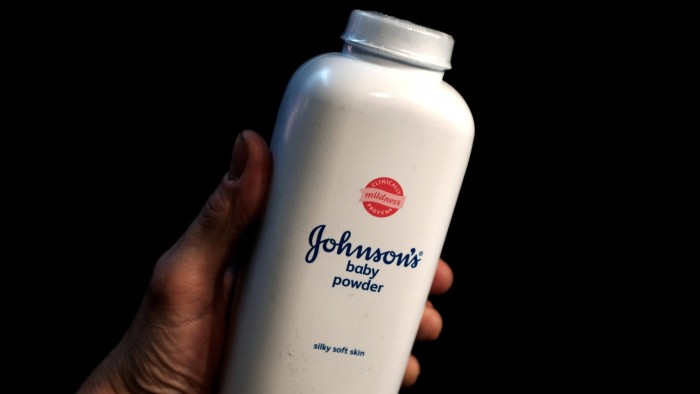J&J’s latest Texas two-step strategy on brink of victory

Unlock the Editor’s Digest for free
Roula Khalaf, Editor of the FT, selects her favourite stories in this weekly newsletter.
Can the Texas two-step work the third time around? A pair of clever attempts by Johnson & Johnson, starting in 2021, to use the US bankruptcy code to take care of billions of dollars in alleged liability over carcinogenic talc powder were found to be too cute by a half. A third attempt currently under way, however, might be about to thread the needle.
A J&J subsidiary known as Red River Talc (named after a body of water near Dallas) filed for bankruptcy in a federal court in Houston in September. The strategy relies on a Texas state law to create a vehicle that houses only talc liability claims.
In the pair of previous attempts, it went to bankruptcy court with that hammer to push thousands of claimants into a deal. This time around, J&J tried an arguably softer approach.
For technical reasons, those earlier Chapter 11s attempts were thrown out of court. This time, the bankruptcy filing was struck after a deal with victims at the beforehand, an approach that effectively dares a bankruptcy judge to take agreed-upon billions out of the pockets of victims.
J&J has always maintained that its talc was safe and the stream of lawsuits are meritless. But it was willing to write a cheque if it could get permanent closure and most importantly, keep its main parent company — worth nearly $400bn — as far away and as untainted by the product liability litigation. They are within striking distance of that goal.
J&J will tell anyone that the purpose of the so-called Texas two-step was never about evading accountability. Rather, bankruptcy was the cleanest and fairest way to resolve the litigation and that J&J should have the ability to use Chapter 11 without having to put the remaining healthy company in bankruptcy.
To demonstrate their good faith, J&J struck a so-called “funding agreement” where the broader company agreed to infuse tens of billions of dollars into a bankrupt entity when a settlement was reached. In exchange for the guaranteed money, J&J and its executives expected full liability releases.
The idea that entities not in bankruptcy can get the benefits of Chapter 11 — including litigation stays and releases — is extremely controversial and the key issue in a recent Supreme Court fight over the Purdue Pharma’s bankruptcy plan that would shield members of the company’s founding Sackler family from future civil liability in exchange for a $6bn contribution.
The J&J funding agreement gambit was ultimately rejected by federal courts in New Jersey (J&J had also first tried to pursue those original cases in North Carolina before being forced back to their home state). The court ruled that the talc vehicle had not shown a “financial distress” motivation to file for bankruptcy because of the billions the J&J parent company was backstopping.
In the current Texas bankruptcy, J&J has garnered the support of what it says are 83 per cent of claimants, enough for a court to approve the settlement and bind holdouts to the terms — the pot is now set at around $8bn and the standards of bankruptcy in the Texas federal court are confusingly different than those in the Northeast.
Efforts by the Department of Justice to shift the case back to New Jersey — it calls J&J’s repeated efforts to access bankruptcy courts as “textbook example of bad faith”— have so far not borne fruit.
Among the last barriers to the deal getting done is a fight put up by holdouts and their law firm about just how valid the 83 per cent of claimholder support is — there have been accusations against J&J of “vote buying” which it rejects. Conversely J&J has accused plaintiff’s lawyers and litigation funders of ulterior motives. By February, we should know if these objections are accepted by the court.
Plenty of claimants are now happy to settle with J&J and expeditiously get their money. The government and the holdouts, however, believe the company is running roughshod to get off easy from courtroom trials where they could be forced to pay more.
This third attempt at the two-step is undoubtedly creative. Many big companies like J&J are resigned that old, legacy products may come back to haunt them with big liabilities. They are willing to write big checks to get finality, but believe they can do so on terms they dictate.
Congress could clarify the laws to make Texas two-step shenanigans unnecessary, both allowing victims their day in court and companies the chance to fairly defend themselves as well as neatly negotiate deals that they want to make. For now, our faith rests with the courts to disentangle all the manoeuvrings.
#JJs #latest #Texas #twostep #strategy #brink #victory





